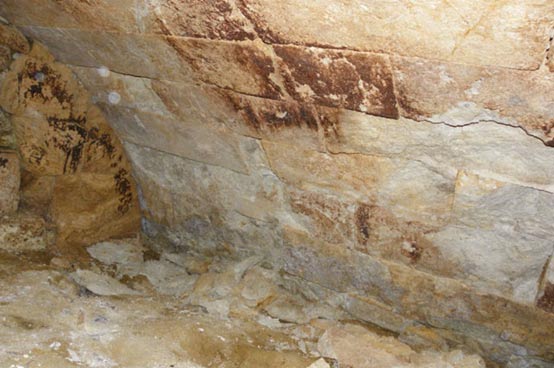
Archaeologists enter third chamber of Amphipolis Tomb
Archaeologists have now entered the third chamber of the Amphipolis Tomb, a monument which has captured worldwide attention since the discovery of two marble sphinxes guarding its entrance. Excitement and speculation have been mounting over the identity of the tomb owner and what they might find inside. However, there are increasing concerns over the stability of structure, as excavation work is affecting the strength of the roof and walls.
The Greek Ministry of Culture have released images of the third chamber of the tomb, which lies within the Kasta Hill burial mound in Amphipolis, located about 100 kilometres east of Thessaloniki in Greece. The chamber lies beyond two marble caryatids – sculpted female figures serving as architectural supports – which were uncovered last week. Behind the caryatids, archaeologists found an Ionic-style marble lintel gate. The room was found to be an arched, soil-filled chamber, with traces of red paint on the limestone walls.

Behind the caryatids of the Amphipolis Tomb , archaeologists found an Ionic-style marble lintel gate. Credit: Greek Ministry of Culture

Domed ceiling of the third chamber of the Amphipolis Tomb . Credit: Greek Ministry of Culture

Traces of red paint remain in patches on some of the walls in the third chamber of the Amphipolis Tomb . Credit: Greek Ministry of Culture
At this stage, archaeologists are unable to remove soil from the third chamber until protective measures have been taken to support the walls and ceiling to prevent collapse. Retaining walls and steel beams will be installed across the length and breadth of the chamber before soil will be removed, small sections at a time.
Less than half the tomb has been explored so far, and removing the tons of earth that fill it will take several more weeks. Although no burials have been found so far, the opulence points to some relative or senior official linked with Alexander the Great.
The tomb dates back to the late fourth century B.C. and has the characteristics of a work by Dinocrates, Alexander the Great's chief architect. In addition, researchers have found rosettes painted in blue, red, and yellow, which are similar to those found on the coffin from the tomb believed to belong to Philip II, Alexander the Great’s father, suggesting that the tomb at Amphipolis may also belong to a relative of Alexander the Great.
Featured image: This diagram from the Greek Ministry of Culture shows what archaeologists have discovered so far inside the Kasta Hill tomb. Credit: Greek Ministry of Culture
















Comments
How exciting!!! I hope they make it through safe and sound, and soon!!! I'd like to know what's back there!!
love, light and blessings
AB
This is incredible. Well worth the time it takes to secure the structures.
Peace and Love,
Ricky.